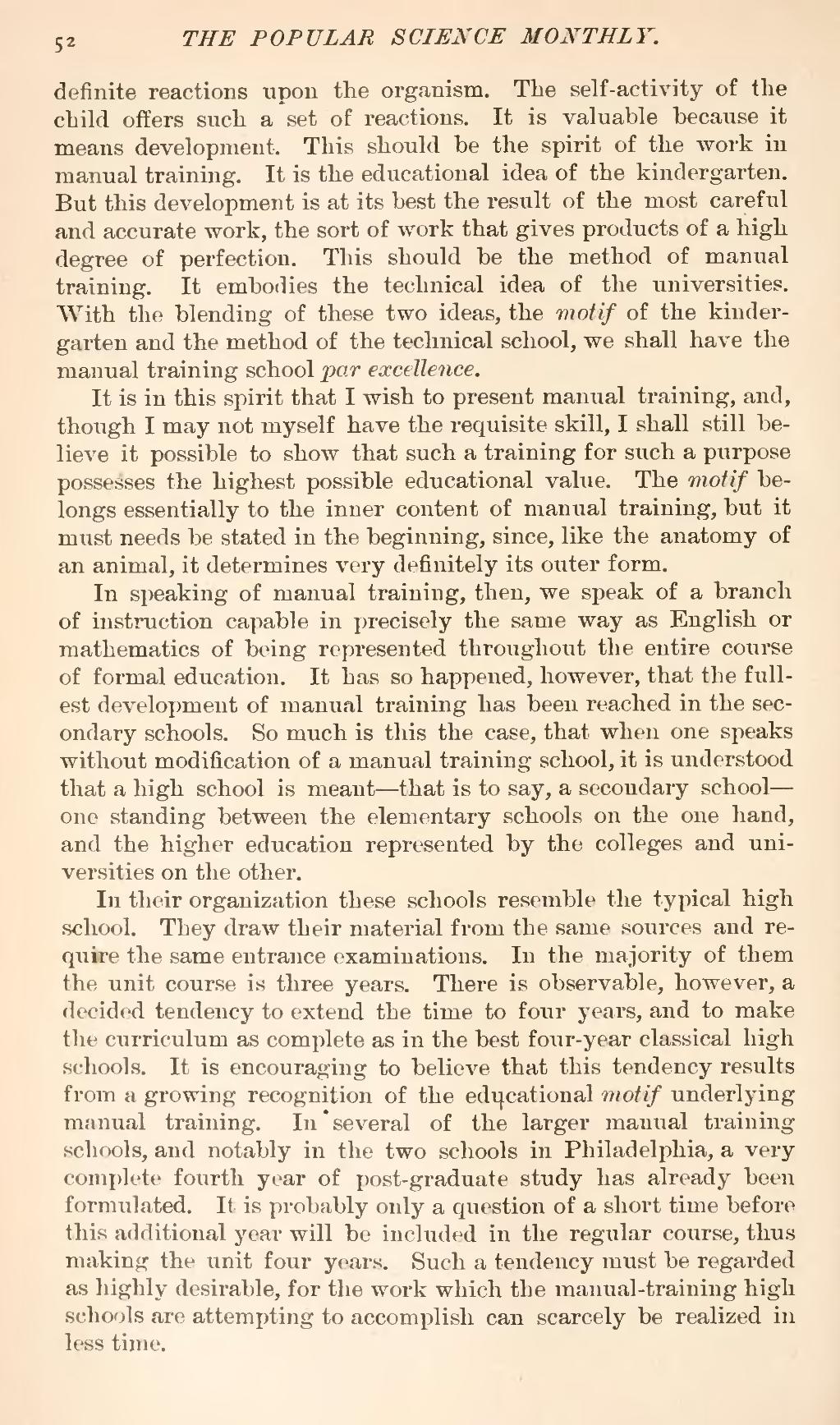definite reactions upon the organism. The self-activity of the child offers such a set of reactions. It is valuable because it means development. This should be the spirit of the work in manual training. It is the educational idea of the kindergarten. But this development is at its best the result of the most careful and accurate work, the sort of work that gives products of a high degree of perfection. This should be the method of manual training. It embodies the technical idea of the universities. With the blending of these two ideas, the motif of the kindergarten and the method of the technical school, we shall have the manual training school par excellence.
It is in this spirit that I wish to present manual training, and, though I may not myself have the requisite skill, I shall still believe it possible to show that such a training for such a purpose possesses the highest possible educational value. The motif belongs essentially to the inner content of manual training, but it must needs be stated in the beginning, since, like the anatomy of an animal, it determines very definitely its outer form.
In speaking of manual training, then, we speak of a branch of instruction capable in precisely the same way as English or mathematics of being represented throughout the entire course of formal education. It has so happened, however, that the fullest development of manual training has been reached in the secondary schools. So much is this the case, that when one speaks without modification of a manual training school, it is understood that a high school is meant—that is to say, a secondary school—one standing between the elementary schools on the one hand, and the higher education represented by the colleges and universities on the other.
In their organization these schools resemble the typical high school. They draw their material from the same sources and require the same entrance examinations. In the majority of them the unit course is three years. There is observable, however, a decided tendency to extend the time to four years, and to make the curriculum as complete as in the best four-year classical high schools. It is encouraging to believe that this tendency results from a growing recognition of the educational motif underlying manual training. In several of the larger manual training schools, and notably in the two schools in Philadelphia, a very complete fourth year of post-graduate study has already been formulated. It is probably only a question of a short time before this additional year will be included in the regular course, thus making the unit four years. Such a tendency must be regarded as highly desirable, for the work which the manual-training high schools are attempting to accomplish can scarcely be realized in less time.
